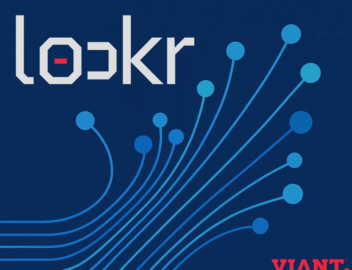

Thank you!
Just one more thing before you go...

‘A value exchange’: How consumers can benefit from a new era of authentication
By Travis Clark – The Current
The open internet has three stakeholders, according to Keith Petri, founder and CEO of Lockr: Publishers, marketers, and consumers. And throughout 2024, these stakeholders will face a new era of the web.
On Jan. 4, Google began phasing out third-party cookies for 1 percent of Chrome users, and it aims to completely get rid of cookies on its browser in the second half of the year. Cookies enable advertisers to track users across websites, making it easier to retarget people and personalize their ads.
Still, the “cookieless future” was here long before Google’s deadline. It’s been spurred along by cookie-free environments like connected TV (CTV), streaming audio, and mobile devices; Safari ditching cookies in 2020; and new identity solutions available to marketers, according to industry professionals who spoke to The Current. But Chrome’s cookie deprecation represents the true end of an era and is likely to light a fire under publishers and marketers to embrace new ways of authenticating users. That means verifying a person’s identity through information they provide — by logging in to a website with an email or other contact information, for example.
Travis Clinger, chief connectivity and ecosystem officer at LiveRamp, calls authentication the “glue that holds [the free internet] together.”
The benefits for publishers and brands are fairly obvious: A person who is signed in is likely to be more engaged with the publisher, and that first-party data can go a long way toward helping marketers tailor their campaigns to specific users. But what compels people to authenticate their identity and to share their personal information?
“All parties involved benefit,” says Petri. “Like any relationship, it’s helpful when there is trust and transparency.”
The benefits of authentication for consumers
Transparency might be the biggest consumer benefit of authentication. When consumers sign in, publishers and brands can leverage this interaction to be upfront about how they intend to use data and offer consumers a chance to control how it is used. It’s a critical opportunity for brands and publishers to build a stronger relationship with consumers.
Once trust is established, users might be encouraged to share personal information, if they feel they are getting something out of it. According to a recent study conducted by The Trade Desk Intelligence and YouGov, 74 percent of American adults surveyed are willing to share personal information with brands and retailers. The biggest factors encouraging them to do so are deals and perks.
“A value exchange is consumers acknowledging the value that a publisher is offering and sharing their identity and data with the publisher in exchange for a personalized experience and, often, free content,” LiveRamp’s Clinger says. “By recognizing the value of authentication, both sides can benefit.”
Petri says that publishers can even offer “perks that are outside of their core value proposition,” citing The New York Times’ focus on games as one example.
After the user is authenticated, providing them with the ability to update their preferences is key to convincing users of the benefits of sharing the information they’ve provided, says Petri. For instance, if someone is signed into a news app or website, the publisher should know what topics the user does or doesn’t care about reading. The same goes for a streaming service. Alerting them to their topics of interest, or recommending content they’re likely to watch, is “going to increase engagement, increase time on site, and increase their positive affiliation with the brand.”
Authentication can also “create one consumer experience” across devices, says Clinger. He notes that streaming platforms are good at this: If a viewer watches a show halfway on one device, and they sign in on another device, it will pick up where they left off. CTV is leading the way here, but this type of experience is one that publishers can look to emulate as they build out their platforms and systems, according to Clinger.
“I think a lot of publishers may not be ready for that kind of content continuity, but it’s a cool future,” Clinger says.
What’s ahead for authentication
More importantly, Clinger says that publishers should “broaden their creativity around authentication.”
“Too often we think authentication means logging in,” he says, adding that that’s not necessarily the case: simply signing up for a newsletter could be another form of authentication. And according to The Trade Desk Intelligence and YouGov survey, 58 percent of respondents would be more willing to share personal information if all that was required was an email address.
No matter what the future holds, though, he doesn’t foresee one identity solution taking over: “You’re not going to have hundreds of authenticator identifiers, but there will definitely be a few,” he says. “And they should definitely be interoperable.”
View the original article in The Current.

Machine-Generated Email Cost Calculator
Unlock additional revenue by integrating with Identity lockr.
Select your industry vertical.
How many registered users or newsletter subscribers do you have?
Average monthly emails sent to each subscriber per month?
What is your average email open rate?Optional
What is your average email click rate?Optional
Has lockr previously analyzed the machine-generated emails in your first-party data?
What was the percentage?
Enter your RPM (page revenue per 1,000 sessions).
What is your average monthly subscriber growth rate?
What is your anonymous web visitors monthly pageview traffic?
What is your authenticated monthly pageview traffic?
Projected Incremental Revenue
Projected Annual MGE Overhead
| MGE Fees | $0 |
| MGE Lost Email Revenue | $0 |
| MGE Advertising Leakage | $0 |
| One month of Email Jail | $0 |
| Incremental Revenue | $0.0M |
Enter your email to receive the full report.
Are you sure you want to leave?
Changes you made will not be saved.







